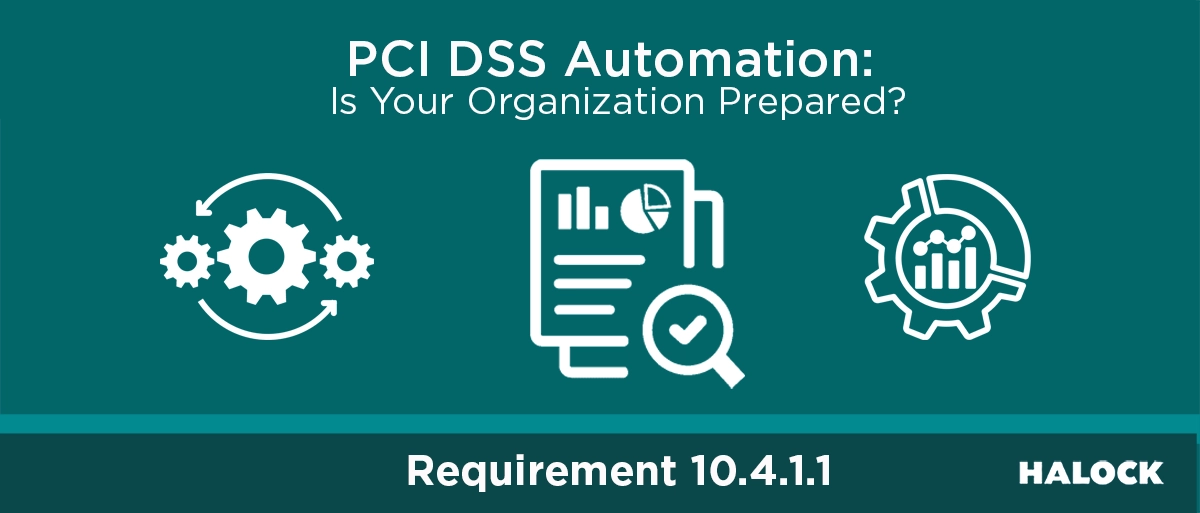By Viviana Wesley, PCI QSA, ISO 27001 Auditor, CISM – Principal Consultant, Governance, Compliance and Engineering Services and Jason Maiden, CISSP, PMP, PCI QSA, ISO 27001 Lead Auditor – Managing Consultant
Gearing Up for PCI DSS Automation
Automation is revolutionizing industries across the board, and payment card compliance is no exception. PCI DSS v4’s Requirement 10.4.1.1 reflects this shift, mandating the use of automated mechanisms for audit log reviews. This requirement addresses the increasing inadequacy of manual log reviews in the face of:
- An expanding threat landscape.
- The rising frequency and sophistication of cyberattacks.
- The sheer volume of data generated by modern systems.
PCI DSS Automation: What is Requirement 10.4.1.1?
Starting March 31, 2025, organizations must implement automated mechanisms to perform audit log reviews. Manual log reviews will no longer suffice, as automation significantly enhances the speed and accuracy of identifying and responding to suspicious activities. Automated monitoring should focus on detecting:
- Unauthorized access attempts.
- Changes to system configurations or critical files.
- Other activities signaling potential security breaches.
The underlying premise is simple: the faster your team detects and identifies potential incidents, the faster you can respond to mitigate risk.
Attacks Automation Might Have Prevented
Automated log reviews are particularly effective in addressing password-based attacks, such as credential stuffing and password spraying. By continuously monitoring authentication attempts, automation detects anomalies in real-time, enabling swift responses to suspicious activities.
Credential stuffing, a common automated attack method, uses stolen credentials from one source to gain unauthorized access to accounts across multiple services. The impact of such attacks has been devastating:
- Roku Credential Stuffing Attack: On April 12, 2024, media streaming giant Roku reported a credential stuffing attack affecting 591,000 customer accounts.
- 23andMe Breach: In fall 2023, hackers compromised approximately 14,000 user accounts, gaining access to 5.5 million DNA relative profiles.
While it’s unclear whether these organizations had automated logging systems in place, such tools could have mitigated the impact. Automated logging detects unusually high volumes of failed login attempts—characteristic of credential stuffing—promptly alerting security teams to take preventive action.
How HALOCK Can Help
The transition to automated log reviews can present challenges for organizations deciding how to meet PCI DSS Requirement 10.4.1.1 effectively. HALOCK helps organizations evaluate their chosen solutions or methods to ensure they align with PCI DSS requirements and compliance objectives. Here’s how we can assist:
- Reviewing Your Plans: HALOCK works with your team to evaluate the automated mechanisms or tools you plan to use for log reviews, ensuring they meet PCI DSS expectations.
- Guidance on Control Requirements: Our QSAs provide clarity on Requirement 10.4.1.1, helping you understand how to structure your approach to automated log reviews in compliance with PCI DSS.
- Ensuring Audit-Readiness: HALOCK can validate documentation and processes to ensure compliance prior to PCI DSS validations.
- Risk Analysis Expertise: Utilizing the Duty of Care Risk Analysis (DoCRA) principles for analyzing risks that addresses the interests of all parties potentially affected by those risks, for the PCI DSS Targeted Risk Analysis (TRA) requirements, we help ensure your automation strategies are both compliant and reasonable for your organization’s size and complexity.
Partner with HALOCK for PCI DSS Compliance Success
With the March 31, 2025, deadline approaching, ensuring your automated solutions meet PCI DSS requirements is critical. HALOCK’s solution agnostic QSAs provide the guidance you need to confidently implement compliant, effective, and audit-ready automation strategies.
To learn more about how HALOCK can assist your organization, contact us today to speak with one of our PCI DSS compliance specialists. Together, we’ll ensure your approach to automation aligns with PCI DSS standards and strengthens your security posture.

